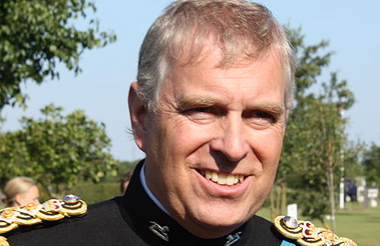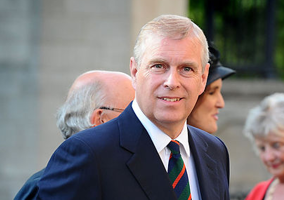I can only imagine the sinking feeling that the trustees and senior leaders of many charities had last weekend when they realised that their very high-profile patron, one Prince Andrew, was about to go on Newsnight to talk about his friendship with Jeffrey Epstein.
It could hardly have gone worse for everyone involved and around 200 charities and other bodies now might have to decide whether to keep him as parton in the long run.
The fallout from what has been widely described as a “car crash interview” has been widespread, and rightly so. The focus should rightly turn to how best to support Epstein's victims and how to secure justice for them.
But from the admittedly niche charity governance perspective, it also raises the issue of what value patrons really add, in particular royal patrons. And if we think they are valuable, how best should charities manage that relationship to minimise the risk of a charity being tainted by any unwise behaviour by their patrons?
How does one sack a royal patron?
One of the first things I found myself doing was Googling “how do you sack a royal patron?” Not many results came up.
In eight years covering the charity sector, I can’t ever remember it happening. But we have covered announcements (and occasionally speculation) about which charities royals planned to support, and occasions where senior royals have scaled back their commitments and passed on patronages to younger members of the family.
On the Royal Family’s website, it says that over 3,000 organisations have a royal patron or president, which when you think that there are circa 300,000 charities, is not a very big number at all.
It states the benefit of having one as: “Having a royal patron or president provides vital publicity for the work of these organisations, and allows their enormous achievements and contributions to society to be recognised.”
It adds that royals receive “hundreds of requests each year from organisations asking for their support”, and that individual royals will limit their patronages to ensure that the have enough time to visit charities.
The Queen and Duke of Edinburgh are exceptions because they have inherited patronages from forebearers. For example, the Queen is a patron of the Mothers’ Union, a role first held by Queen Victoria in 1898.
Where royals are taking on new patronages it will often be something they have a personal or local connection to.
The website says “there is no set length” of time for a patronage, and that sometimes it is connected to a particular campaign, but “other times patronages are for life”.
So it appears that while securing the patron is quite difficult, but if you get lucky (or unlucky) then they can literally last a lifetime.
Nowhere could I find information about sacking a patron or a charity actively ending the relationship, though maybe they just haven’t issued press releases when it has happened.
Not all about royals
It’s not just royals who become patrons. Many charities have celebrity patrons who fulfil a similar role in helping to raise awareness of a charity and garner media attention.
But again we have seen this association backfire and result in negative publicity for charities.
Notably this year, the actor Martin Clunes, then a patron of Born Free, was seen on TV doing something the charity actively campaigns against: riding an elephant. This inevitably caught the attention of just about every news outlet that cares about celebrities or animals (quite a lot).
Clunes was “axed” as a patron shortly after. But it’s hard to avoid the feeling that he probably caused the charity more bother than he was worth.
It’s worth highlighting that while Born Free was arguably not as quick to respond as could have been hoped for, its response when it did come was clearer and more decisive than a number of charities connected to Prince Andrew, which seem to be doing their level best to avoid saying anything at all.
Lasting impact, changing times
Accepted wisdom is that patrons bring clout and media coverage, and raise the profile of sometimes under-championed causes in ways which can lead to short-term income boosts.
But I’m not aware of any evidence or research into the long-term or lasting impact. I may be being sceptical, but my hunch is that there isn’t much lasting value.
It’s perhaps worth drawing attention to the fact that younger royals seem to be more focused on causes than on particular brands, and there have been clear hints that they will take a slightly different approach to the sector than those who came before them.
The Duchess of Sussex announced four patronages at the beginning of this year, in keeping with royal tradition. But she has been using Instagram as a platform to highlight the work of many other worldwide causes.
Elsewhere, when the Duke of Cambridge opened an event discussing the future of his charitable work in 2018, he emphasised the importance of “convening”, and said he was “aware that the modern charity sector is very different to the one that previous generations have worked alongside”.
Accountability pressures
Incidents with charity patrons, royal or otherwise, behaving in ways that contradict their charity’s values are almost certainly going to be found out in today’s fast-moving, high-scrutiny landscape.
An issue from a governance perspective is that patrons lend their name and support to a charity they have no formal role in running, meaning it is difficult to place restrictions on specific behaviour.
But to protect a charity’s reputation it is more important than ever that these relationships are managed, nurtured and respected, with both parties understanding the expected behaviours of each other.
Personally I feel the term ‘patron’ and role is dated and elitist. But you only have to glance at the Daily Mail to see that many people are still obsesses with royals and celebrities, so it could be churlish to call for the abolition of all patrons.
There is absolutely no reason why having shorter-time limited patronages shouldn’t become more commonplace, with lifetime honorary patronages being saved for very special occasions.
In my real life I have a rule to prevent my wardrobe from bursting at the seams: If I haven’t worn something in over a year, it goes to a charity shop. Sometimes this hurts, but I’ve never once dashed back to the charity shop to re-buy something, so I think it works.
Would it be possible for charities to adopt a similar approach to patrons and instigate an annual review process? If they haven’t done something to actively support the charity in over a year then let them go, take them off your website.
|
Related items











